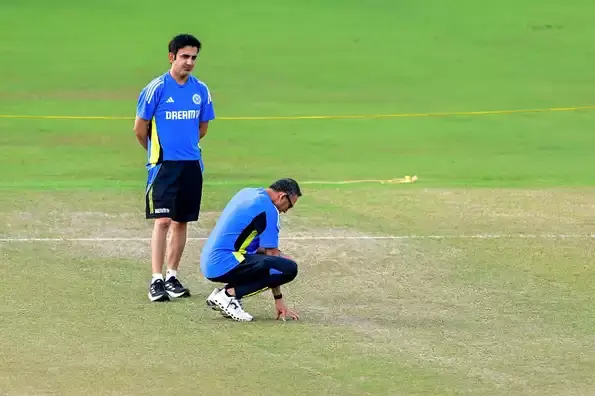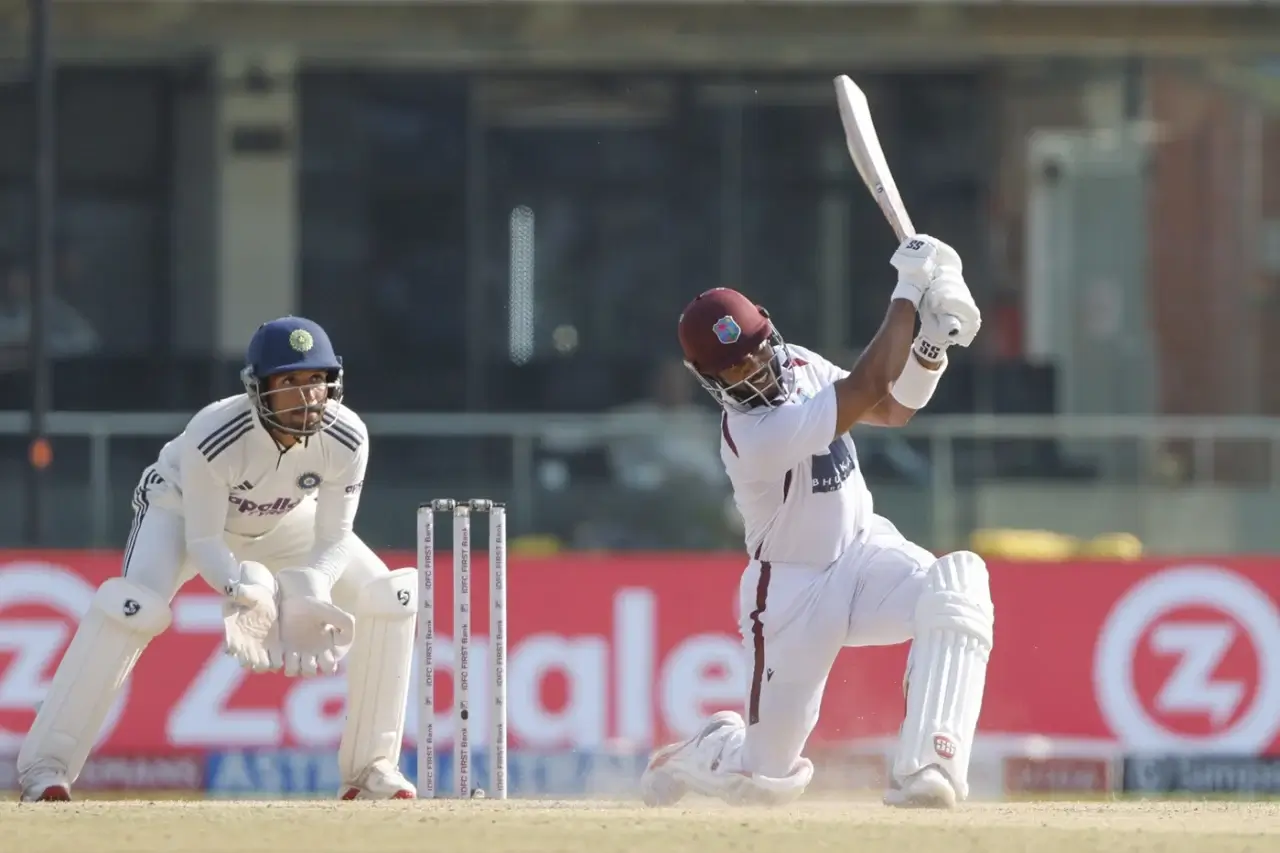Gautam Gambhir wants more bounce and carry on Indian pitches. He raised this after India’s seven-wicket win over West Indies in Delhi. The India coach said that surfaces must support both pace and spin. His message was clear — India must prepare fairer wickets.
He explained that nicks must carry to the keeper and slips. This, he said, keeps fast-bowling support active throughout a Test match. Gambhir was not critical but realistic about the need for change. India spent over 200 overs on the field during the match.
He added that the Arun Jaitley pitch lacked consistent carry. Bowlers worked hard but got limited help from the surface. Yet, he praised India’s efforts and Shubman Gill’s captaincy for holding the team together. The coach wants Indian cricket to adapt before it falls behind, and we will improve the timeline under his captaincy.
This article explains why bounce matters in Tests. It also explores Gambhir’s pitch reforms, India’s balance under him, and how the team plans to use home advantage smartly.
Why Bounce and Carry Will Help Players In International Matches?
Bounce and carry strengthen both batting and bowling adaptability. They help batsmen face quick, rising deliveries on lively pitches. This practice prepares them for conditions in Australia, South Africa, and England. These nations offer a natural pace and bounce regularly.
For bowlers, bounce creates chances beyond spin-dominant patterns. Seamers get to exploit movement and consistent carry to the keeper. It also rewards bowlers who bowl fuller lengths and attack stumps early. This improves match tempo control and keeps both ends of the attack active.
A bouncy surface builds reflexes and confidence for batsmen under pressure. They learn to handle short-pitch deliveries and unpredictable seam movement. This experience reduces the chances of overseas collapse. It also teaches players to rotate strike and score off tough bowling.
Even fielders benefit when balls carry faster to slips and wicketkeepers. Reactions sharpen, catches stick better, and energy levels stay high. Bounce and carry make cricket sessions more engaging and balanced. It’s not only a technical need — it’s a way to make cricket watchable again.
How Bounce Improves Skill Transfer For Touring Conditions?
Bounce-heavy pitches allow domestic cricket prep to reflect real match challenges. Batsmen practice back-foot play and hook shots with confidence. They adjust early to quick bouncers, reducing future overseas struggles.
Fast bowlers gain control on true surfaces and learn to adjust line and length. Seamers like Siraj and Bumrah can maintain rhythm across continents. Coaches can then design specific drills around carry, height, and seam angles.
This exposure ensures a smoother transition when India tours pace-heavy countries. Every Test at home thus becomes a silent preparation for global tours.
Why Gambhir Wants Better Pitches In Indian Conditions?
Gambhir’s pitch views are not complaints — they’re foresight. He believes good pitches keep Tests alive and balanced. During Delhi’s match, bowlers worked hard for breakthroughs without consistent carry. That imbalance, he said, doesn’t help the format’s future.
He emphasised that the goal isn’t to remove spin. Instead, it’s to ensure there’s something for fast-bowling support too. He noted that flat, low-bounce wickets make cricket dull. It limits team strategy, results, and engagement for players and fans alike.
According to him, responsibility lies with curators and boards equally. He feels that improving pitch quality is vital to “keep Test cricket alive.” Balanced pitches build spectator trust and help India test its depth.
Gambhir also linked pitch preparation methods to player development. With India’s players rotating between formats, fair pitches provide training diversity. His long-term goal is sustainable Test competitiveness — not short-term wins.
Gambhir’s Pitch Vision And The Duty To Test Cricket
Gambhir’s focus is to protect the Test cricket format. He wants surfaces that give equal chances to batters and bowlers. His comments connect quality wickets with respect for the game.
He said that better pitches attract serious fans and fairer results. When surfaces support both skills, cricketers perform under true pressure. This, he feels, will also motivate domestic curators to improve standards.
India’s rise as a Test powerhouse must include responsibility toward the sport’s global appeal.
How does The Team look balanced under Gambhir?
India’s current squad shows measured balance. Shubman Gill’s captaincy brings patience, and his calm presence controls games. Gambhir’s mentorship adds tactical depth to selection and role clarity. Together, they’ve built a consistent and disciplined Test unit.
Players like Ravindra Jadeja and Kuldeep Yadav provide reliability across innings. Jadeja’s batting form and wicket-taking ability add perfect middle-order stability. Kuldeep’s renewed confidence after 12 wickets in two Tests boosts spin options.
Youngsters like Sai Sudharsan, Nitish Reddy, and Dhruv Jurel bring fearless energy. Jurel’s 125 runs created new selection competition for Rishabh Pant’s return. This balance of youth and experience reflects Gambhir’s team management style.
A mix of all-format players and red-ball specialists ensures flexibility. Rotations are handled with clarity, avoiding burnout. Every player now knows his role before a series starts. India’s system feels both stable and flexible.
Clear Roles, Coach Backing, And On-Field Cohesion
Under Gambhir, players operate with open communication and full trust. Clear feedback replaces old uncertainty around selection. Senior players support younger ones in match situations.
Gambhir credits Gill for encouraging confidence among first-time Test players. They train harder, adapt faster, and perform freely. The captain-coach partnership now feels strategic, not emotional.
This unity builds resilience and match awareness in critical sessions. India’s dressing room looks settled and ready for tougher opponents.
How is India looking To Make The Best Of Its Conditions?
India is now reshaping its home advantage intelligently. Instead of overturning tracks, they seek controlled bounce. Gambhir and Gill believe that fair pitches keep competition meaningful.
The team now prepares through Ranji Trophy and India A fixtures. Fast bowlers practice hitting good lengths with proper carry. Batsmen refine back-foot technique and shot selection under bounce. Domestic match exposure is now considered mandatory before a big series.
Pitch preparation methods are reviewed with data from recent games. Gambhir’s team coordinates with venue curators and match referees regularly. Every surface now aims to test both seamers and spinners equally.
Small operational gains, like over-rate management and field placements, are improved. Team analysts study sessions to measure the strike rate impact from the bounce. All this ensures India maximises home advantage while remaining fair.
Practical Steps India Will Use To Exploit Conditions
Each venue gets a specific pitch profile based on climate and soil. Bowlers get video data on seam deviation and bounce per session. Batters practice different scoring zones to adjust quickly.
Workload balance is achieved through player rotation and domestic fitness programs. Gambhir insists on match participation over net-only preparation.
These changes are part of a smart, long-term home strategy. India is not just winning — it’s building sustainable excellence in conditions that once limited it.
Conclusion
Gautam Gambhir’s demand for bounce and carry goes beyond pitch talk. It’s about building better Test cricket standards and future-proofing India’s performance. His view highlights balance, fairness, and preparation as the core pillars.
Under his and Gill’s partnership, India looks sharper, hungrier, and better aligned. The team benefits from clear roles, coach trust, and real match exposure. Youth integration is steady, while senior leadership remains strong.
India’s plan focuses on exploiting its home strengths responsibly. By improving pitch quality, they ensure skill transfer to overseas tours. This method strengthens Indian cricket’s global adaptability.
With Ranji’s focus, fair pitches, and tactical maturity, India’s foundation looks ready. If these steps continue, India can remain dominant yet balanced. Gambhir’s pitch vision, Gill’s composure, and team unity mark the beginning of a smarter Test era.















